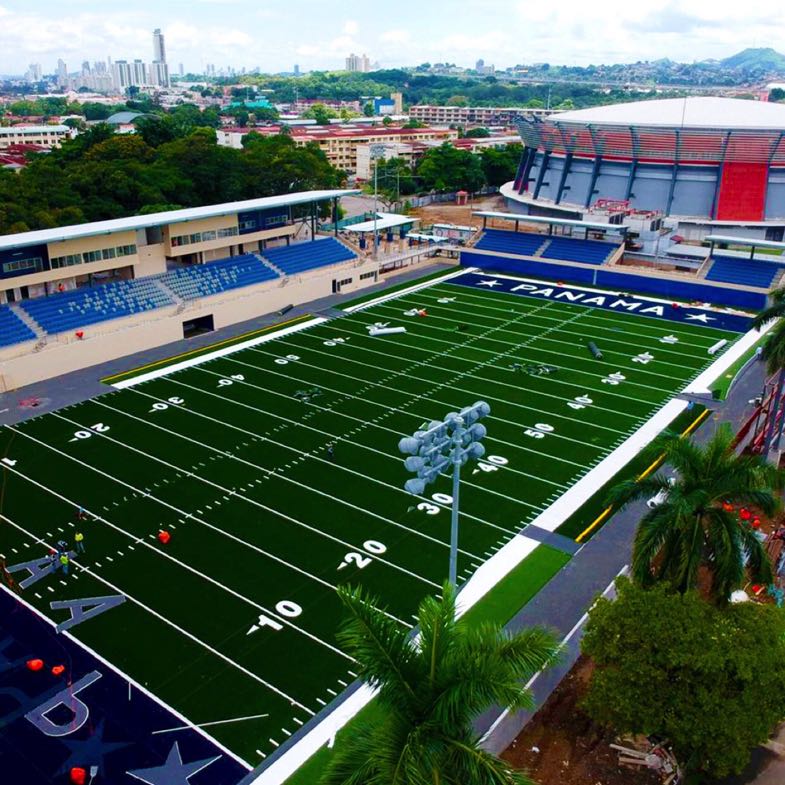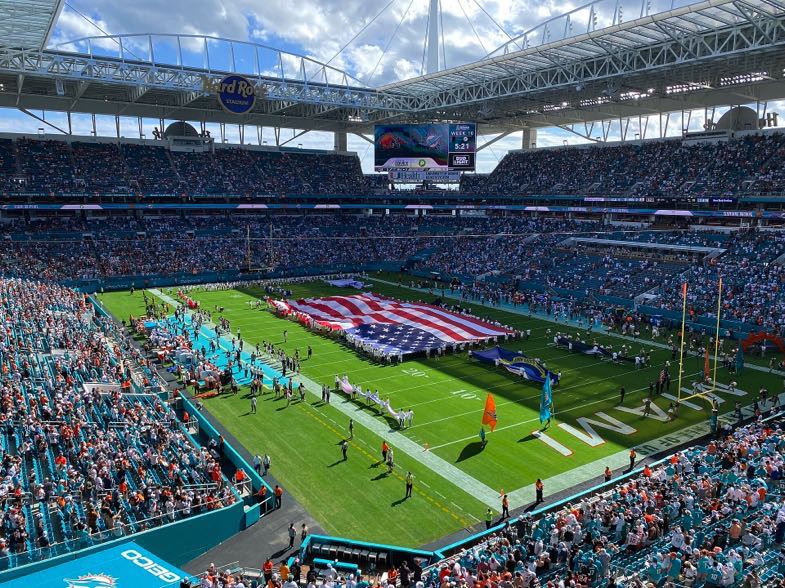 There are so many aspects to American football that seem completely normal and easy to understand for long-term players and watchers of the sport that can appear to be entirely alien to those that know very little about it.
There are so many aspects to American football that seem completely normal and easy to understand for long-term players and watchers of the sport that can appear to be entirely alien to those that know very little about it.
There might well be an argument that that is clearly the case with the field on which games are played more than any other aspect of the sport, given the manner in which it looks like such a complicated thing from the outside. Once you understand it, however, it can help you to get a clearer grip on the game in general, thanks to how the fields are used.
The Field Itself

An American football field is 360 feet in length and 160 feet wide, meaning that it covers a total of 1.32 acres. The two longer sides are known as the ‘sidelines’, whilst the shorter ones are referred to as the ‘end lines’. The rules of the National Football League are such that the sidelines and end lines have to be six feet wide, although this is not something that is in place for college or amateur teams, nor for those that are on multi-use pitches. Regardless, the lines are measured along the inside edge of boundary lines, with the lines themselves counting as being out of bounds.
When it comes to distances discussed in American football, it tends to be in yards more often than not. There are goal lines at each end of the field that span the width, running ten yards parallel to each of the end lines. The ‘Field of Play’ in terms of the NFL rulebook is considered to be the 100 yards that runs between the two goal lines. If you look at an American football field you will also notice other lines, with each one appearing at a five-yard interval from the previous ones and spanning the width of the pitch, whilst every other line has a number one that runs as follows:
- 10
- 20
- 30
- 40
- 50
- 40
- 30
- 20
- 10
The End Zone
Perhaps the most important part of a National Football League pitch is the end zone. There is one at each end of the field, coming between the goal lines and the end lines and including the goal line itself. The end zone is where a player needs to be in order to score a touchdown, a two-point conversion or a safety, whilst it’s also where touchbacks happen. Each corner of the end zone is marked with an orange pylon that is weighted down, with end zones usually having the likes of a team logo or some other pattern onto it, provided it doesn’t interfere with the standard pitch markings.
Yard Lines

Those numbers referred to a moment ago are known as the yard lines. They are there to allow both players and officials to know about the distance from the goal line that play is taking place. The yard lines ‘belong’ to the team that is defending the end zone, so a team that is defending the south end zone will have the 25-yard line closest to their end zone as ‘their’ 25-yard line. The distance is painted in white in 10-yard intervals, but some stadiums will also choose to mark 5-yard intervals. The likes of Sanford Stadium also has a ‘G’ on the goal line.
The more eagle-eyed amongst you will also have noticed that there is often an arrow with the number, which is used to indicate which goal line is the nearest. The bottom edge of each number has to be 12 yards from the sidelines, according to NFL rules. Outside the lines are orange markers, which are also there to help indicate the ten-yard interval. Anything other than the five or ten-yard lines is indicated by the use of two-foot-long lines that are four inches wide, painted parallel to the goal lines at one-yard intervals and spanning the length of the field.
Goals
Centred on each end line is a goal, which is made up of a horizontal crossbar that is ten feet above the ground and aligned with the end line’s inside edge. There are also vertical goal posts, sometimes referred to as ‘uprights’, that are 18 feet and six inches apart and have to extend at least 35 feet above the crossbar. This is where field goals and fair catch kicks are scored, as well as extra points after a touchdown. Any National Football League field as well as numerous amateur and college ones feature goal structures that are slingshot-shaped, whilst the support post is gooseneck-shaped.
Unless there are extraordinary circumstances that call for a waiver, goalposts in the NFL have to be yellow. The same is not true in college games, where they can be yellow or white, whilst amateur games will sometimes see shorter posts or wider goals used as necessary. Prior to 1974, goalposts were positioned on the goal line, but the rules changed then in order to ensure that they were on the end line from that point onwards. That brought them in line with collegiate rules, that had seen the posts on the end line since 1927.
Hash Marks

If you’ve watched any American football then it’s possible that you might have seen hash marks on the field. These are officially called ‘inbounds lines’ as far as the National Football League’s rule book is concerned, but they are effectively two rows of shorter lines that run the length of the field. They are there in order to make the boundary of where the scrimmage down is allowed to start, whilst a ball that is downed outside of the hash marks or one that is run out of bounds will see the next play begin as close to the hash mark of where it was downed as possible.
Hash marks are located 70 feet and nine inches from each of the sidelines, which has been the case since 1972. Each five-yard line is marked with a two-foot line that is painted perpendicular to the sideline, coming at one-yard intervals. They tend to be painted so that the farthest edge from the sideline is the distance required from the sideline. Hash marks in the NFL are in line with the goalposts, but things are slightly different in the college version of the game.
Any Other Markings
Whilst many National Football League fields will have the likes of advertisements and sponsorships on them, there are only a few other official lines that you will see on an American football field. In the NFL, for example, there is a three-foot line painted parallel to the goal line in the middle of the two-yard line, which denotes the line of scrimmage when a two-point conversion is being attempted. Meanwhile, a small ‘x’ can be painted at the centre of each of the 35-yard lines, which is used to indicate the spot from which kickoffs will take place.
The 50-yard line at the majority of both professional and college fields will look to have a team logo painted on it. When it is the Super Bowl or some other special match, the event logo may be painted there instead. Obviously, anything else that is on a field can’t interfere with official markings, with teams required to get special permission in order to put them there. It is common to see decorative lines placed at the 20-yard or 25-yard lines, often with something such as the American flag being used.
Surface Types

In terms of what people can expect American football games to be played on, there are two main surfaces that are used in the National Football League. The first is that of natural grass, whilst the second is synthetic turf.
It is becoming more and more common for an NFL stadium to use synthetic turf, largely because there has been an increase in multiple tenants of the same venues. In the October of 2023, for example, the Miami Hurricanes hosted Georgia Tech at the Hard Rock Stadium, then the following day the same field hosted the Miami Dolphins match against the New York Giants.
